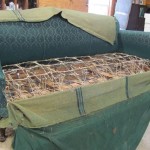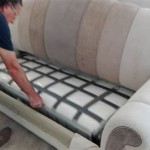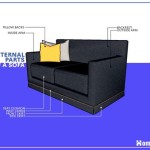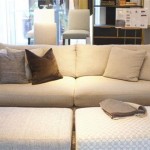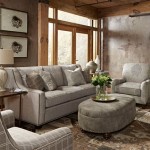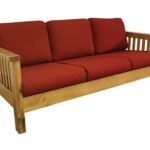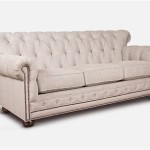```html
Queen Sofa Bed: A Comprehensive Guide
A queen sofa bed represents a versatile furniture piece designed to address the dual needs of seating and sleeping accommodations. It combines the functionality of a standard sofa with the convenience of a queen-sized bed, making it a practical solution for homes with limited space or those who frequently host guests.
The core concept behind a queen sofa bed involves a concealed mattress and folding mechanism integrated within a sofa frame. When not in use as a bed, the mattress is neatly tucked away, allowing the furniture to function as a regular sofa. When needed, the mechanism can be activated to unfold the mattress, instantly transforming the sofa into a queen-sized sleeping surface. This adaptability makes it an appealing choice for apartments, guest rooms, home offices, and living rooms.
Key Considerations When Choosing a Queen Sofa Bed
Selecting the right queen sofa bed requires careful consideration of several crucial factors to ensure it meets specific needs and preferences. These factors encompass size, comfort, mechanism quality, style, and budget.
Size and Space: The dimensions of both the sofa and the unfolded bed are paramount. Before purchasing, accurately measure the intended space. Pay attention to the sofa's overall footprint when closed and the space required when the bed is fully extended. Consider the clearance needed around the unfolded bed for comfortable movement. Smaller rooms might necessitate a model with a more compact design, while larger spaces can accommodate more substantial options. Ensure there's enough room to comfortably navigate around the deployed bed without obstructing doorways or other furniture.
Comfort: Comfort is critical for both seating and sleeping. Evaluate the sofa's cushions for support and resilience. Consider the type of filling used (foam, feathers, or a combination) and its impact on overall comfort. When assessing the mattress, prioritize thickness, support, and material. Memory foam mattresses tend to contour to the body, offering pressure relief, while innerspring mattresses provide more traditional bounciness. Investigate the mattress's construction to determine its longevity and resistance to sagging. Some sofa beds offer upgraded mattress options for enhanced comfort.
Mechanism and Durability: The quality and durability of the folding mechanism are vital for the long-term functionality of the sofa bed. Look for a mechanism that operates smoothly and quietly. Examine the frame's construction, favoring solid wood or reinforced metal for stability. Test the mechanism multiple times to ensure it unfolds and folds easily without sticking or requiring excessive force. A well-constructed mechanism will withstand repeated use and contribute to the sofa bed's overall lifespan. Warranties on the mechanism are a valuable indicator of the manufacturer's confidence in its quality.
Style and Aesthetics: A queen sofa bed should seamlessly integrate into the existing décor. Consider the style, color, and upholstery material. A wide range of styles are available, from contemporary and minimalist to traditional and ornate. Select an upholstery material that is both aesthetically pleasing and durable. Options include fabric, leather, and microfiber, each with its own characteristics in terms of appearance, texture, and maintenance requirements. The color should complement the room's color scheme and avoid clashing with other furniture or accessories.
Budget: Queen sofa beds are available at various price points. Establish a realistic budget before beginning the search. Prices vary depending on factors like size, materials, construction quality, and brand. Be wary of extremely low-priced options, as they may compromise on quality and durability. Investing in a higher-quality sofa bed that meets comfort needs, long-term durability, and aesthetic preferences is generally a better investment in the long run.
Types of Queen Sofa Bed Mechanisms
The mechanism used to convert a sofa into a bed is a defining feature that influences ease of use, comfort, and overall durability. Several distinct types of mechanisms are commonly employed in queen sofa beds.
Pull-Out Mechanism: This is perhaps the most prevalent type. It involves pulling the hidden mattress out from under the sofa's seat cushions. The mechanism typically consists of a metal frame that folds out to create a queen-sized sleeping surface. The pull-out mechanism is relatively simple to operate and can be found in a wide range of sofa bed styles and price points.
Click-Clack Mechanism: This mechanism utilizes a hinged backrest that clicks into different positions, allowing the sofa to be transformed into a flat sleeping surface. The backrest is typically lowered to align with the seat cushion, creating a bed. Click-clack sofa beds are often more compact and easier to convert than pull-out models, making them suitable for smaller spaces. However, the resulting bed may be firmer and less comfortable than a traditional mattress-based pull-out sofa bed.
Futon Mechanism: While technically a distinct type of furniture, futons can function as sofa beds and often come in queen sizes. Futons typically consist of a frame and a thick mattress that can be folded into a sitting position or laid flat for sleeping. Futons offer a simple and affordable option, but their comfort level can vary greatly depending on the quality of the mattress. Futon mattresses are often firmer than traditional sofa bed mattresses.
Convertible Sectional Sofa: Some sectional sofas are designed with a built-in sleeping surface. Often, one section of the sectional can be pulled out or unfolded to create a queen-sized bed. These convertible sectionals offer flexibility in terms of layout and functionality, providing ample seating space while also accommodating overnight guests. The mechanism can vary depending on the specific design, but it typically involves a pull-out or folding mechanism.
Materials Commonly Used in Queen Sofa Beds
The materials used in manufacturing queen sofa beds significantly impact their overall quality, comfort, and longevity. These materials encompass the frame, upholstery, and mattress components.
Frame Materials: The sofa bed's frame provides the structural foundation. Solid hardwood, such as oak or maple, is a durable and reliable choice. Engineered wood, such as plywood or particleboard, can also be used, but the quality can vary. Look for frames that are reinforced with metal brackets or corner blocks for added stability. A sturdy frame is essential for supporting the weight of the mattress and ensuring the sofa bed can withstand repeated use.
Upholstery Materials: The upholstery material affects the sofa bed's appearance, comfort, and durability. Fabric options include cotton, linen, microfiber, and polyester blends. Each fabric has its own characteristics in terms of texture, stain resistance, and wear resistance. Leather offers a luxurious look and feel, but it can be more expensive and require more maintenance. Microfiber is a popular choice due to its softness, durability, and affordability. Consider factors like pet friendliness, stain resistance, and ease of cleaning when selecting the upholstery material.
Mattress Materials: The mattress significantly impacts the sleeping comfort of a queen sofa bed. Common mattress materials include innerspring coils, memory foam, and latex. Innerspring mattresses offer a traditional feel with bounce and support. Memory foam conforms to the body, providing pressure relief and reducing motion transfer. Latex is a natural material that is known for its durability, breathability, and hypoallergenic properties. Some mattresses combine different materials, such as a combination of innerspring coils and a memory foam layer, to provide a balance of support and comfort. The thickness and density of the mattress also play a crucial role in determining its overall comfort and support.
Filling Materials: The cushions used in the sofa portion of the queen sofa bed are typically filled with foam, feathers, or a combination of both. Foam cushions offer good support and resilience, while feather cushions provide a softer and more plush feel. The density of the foam or the ratio of feathers to down influences the overall comfort and support of the cushions. High-density foam is more durable and retains its shape better than low-density foam. A combination of foam and feathers can provide a balance of support and softness.
```
Uma Queen Size Sofa Bed Singapore Comfy

Kaira Queen Sofa Bed Maxcoil Mattresses Frames And Sofas Singapore

Lawry Queen Size Sofa Bed Da3803

Sofa Bed System With Real Mattress Queen Size 160x200cm Made In Belgium Orthopedic Slatted 365 Usage Lazada Singapore

Ran Queen Size Sofabed Sofa Bed Specialists

Slumbersofa Enigma Customisable Real Mattress Sofa Bed Spaceman

Sofa Bed Queen Size Furniture Home Living Sofas On Carou

Queen Size Sofa Bed Furniture Home Living Sofas On Carou

Slumbersofa Horizon Horizontally Opening Sofa Bed Spaceman

Osvald Sofa Bed The Futon Company

